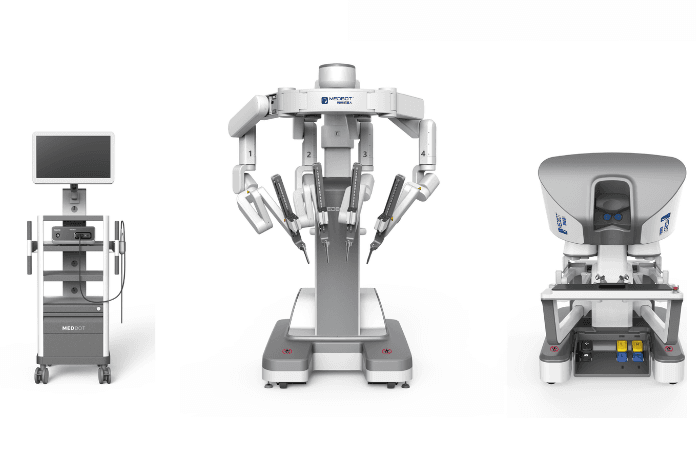In a groundbreaking medical achievement, Dr. Youness Ahallal, a French surgeon, successfully performed prostate cancer surgery on a patient located in Morocco, while operating from Shanghai, China, a staggering 12,000 kilometers away. This intercontinental procedure carried out on November 16, has set a world record as the longest remote surgery ever performed, with a round-trip transmission distance exceeding 30,000 kilometers, reported China’s leading news agency, Xinhua News Agency.
The operation utilized the cutting-edge Toumai Robot, a Chinese-made surgical system known for its real-time imaging, precise control, and unmatched flexibility. Despite the vast geographical stretch, the surgery was completed in under two hours, with a communication delay of just 100 milliseconds. The seamless coordination between the robotic arm in Morocco and Dr. Ahallal’s console in Shanghai highlights the transformative potential of robotic-assisted surgery. This landmark achievement not only showcases advancements in surgical robotics but also underscores the possibilities of remote healthcare, bridging the gap between patients and top-tier surgeons without the need for international travel.
The Role of the Toumai Robot in Transforming Surgery
The Toumai Robot, developed in China, has redefined the boundaries of modern surgery. Equipped with high-definition imaging and precise robotic arms, the system has become a game-changer for intricate procedures. During the prostate surgery, Dr. Ahallal effectively removed the tumor and sutured the affected area with exceptional precision, preserving both the vascular-nerve bundle and the maximum length of the urethra.
What makes this accomplishment even more remarkable is that it was achieved using a standard broadband connection, instead of the advanced 5G technology, without compromising the clarity of the real-time video feed. The robot’s stability, precision, and flexibility played a critical role in the success of this complex operation.
This isn’t the first time the Toumai Robot has demonstrated its capabilities. Just a month earlier, in October, the robot-assisted in a minimally invasive kidney surgery between Shanghai and Benin, West Africa, spanning a round-trip transmission of 27,000 kilometers.
With over 250 ultra-long-distance surgeries completed and a 100% success rate, the Toumai Robot has already covered a cumulative transmission distance of more than 400,000 kilometers, making it a true pioneer in the field.
China’s Rising Dominance in Surgical Robotics
China has firmly positioned itself as a global leader in surgical robotics. The Toumai Robot, which received EU CE certification in May, is now approved for multiple medical procedures, including urology, thoracic surgery, and gynecological endoscopy. These advancements reflect China’s commitment to harnessing technology and 5G networks to improve healthcare accessibility.
The extensive deployment of 5G infrastructure has been a critical enabler for the rapid growth of the sector. By the end of August 2024, China had established over 4 million 5G base stations, ensuring high-speed and low-latency connectivity that is crucial for remote surgeries. According to industry research, the market for surgical robotics in China is projected to grow to USD 38.4 billion by 2026, driven by innovations and increasing adoption of these technologies.
The success of the Toumai Robot has also inspired Chinese tech startups to explore the frontier of surgical robotics. With a compound annual growth rate outpacing the global average, the sector is poised to revolutionize healthcare services, making remote surgery a viable and accessible option worldwide.
A Glimpse Into the Future of Remote Surgery
The success of this record-breaking surgery is a testament to the possibilities of combining advanced robotics with robust communication networks. By eliminating the need for patients to travel abroad, remote surgeries like these can democratize access to world-class medical expertise, especially in underserved regions.
As Dr. Youness Ahallal remarked, the smooth and efficient performance of the Toumai Robot, even with standard broadband, showcases its potential to revolutionize medical procedures globally. These achievements pave the way for a future where geographical barriers are no longer an obstacle to quality healthcare.
With innovations like the Toumai Robot, the world is on the brink of a medical revolution. Stay updated on the latest breakthroughs in surgical robotics and healthcare technology to understand how they might impact lives around the globe. The future is here, and it is robotic, precise, and interconnected.
As the demand for surgical robotics grows, remote procedures will not only save lives but also redefine the way healthcare is delivered globally. With the Toumai Robot leading the way, we’re witnessing the dawn of a new era in medical innovation, where precision, accessibility, and technology converge to improve outcomes.

